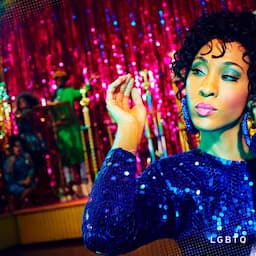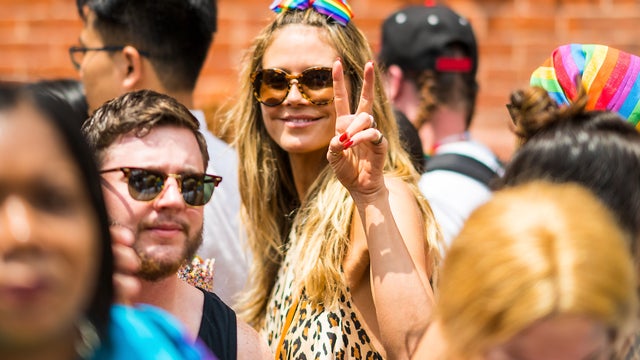Casting Pedro on the third season of the MTV reality TV series marked the first time audiences would see that type of story depicted onscreen.
ET is looking back on LGBTQ pop culture milestones in celebration of Pride Month.
Diversity has always been a core element of The Real World, from the very first season, when seven strangers were picked to live in a house together, to what it is now. Over the course of the long-running franchise -- the 32nd season aired in 2016 -- casting has always reflected America’s journey off-screen. So, in 1994, when MTV decided to go to San Francisco for the third season, co-creator and executive producer Jonathan Murray knew it was vital to include an HIV-positive person or person with AIDS in the house -- marking the first time audiences would see that type of story depicted on TV.
“As a gay man who had lost friends to AIDS, I felt it was important,” Murray told ET in 2015, recalling how Pedro Zamora, a 22-year-old Cuban-American HIV-positive gay man living with AIDS, came to be cast on The Real World: San Francisco. “I remember where I was sitting when I opened the letter from this young man named Pedro Zamora. It just had a wonderful letter sort of telling his life story and his life mission, and there were Xeroxed copies of some pictures of him, and his look was incredible. I ran over to Mary-Ellis Bunim, my late partner, and said, ‘Look at this. This kid has to be on the show.’”
Soon after, Bunim and Murray traveled to Miami, Florida, to meet with Zamora in person and little did they know at the time, he had been throwing up on his way to the interview. “He was putting on a brave front as far as his medical condition and how he was doing,” Murray said. “Before Pedro went on the show, I cautioned him about the stress that one gets when being on a TV show, and he basically said, ‘I’ve lied down in front of the White House, if I want to bring stress into my life that should be a choice that I get to make.’”
On June 30, 1994, the third season premiered and Zamora’s life began to unfold in homes across America.
“MTV is pushing the limits by bringing in a gay person and especially a person with AIDS, which is part of why I did it. That was part of the appeal for me. Even growing up, I never had anybody on TV like, ‘Oh, he’s a gay man like me. I can relate to him,’” Zamora told ET during an interview from inside the cast’s Lombard Street home just days before they wrapped on the season, which filmed from Feb. 12 to June 19. “It’s really cool I can go on MTV and be open about my sexuality and discuss that I have AIDS.”
Zamora’s impact on America was immediate. The reality series became must-see TV in large part thanks to Zamora’s confrontation with castmate David “Puck” Rainey, who was eventually kicked out of the house. Later, Zamora married his partner, Sean Sasser, marking the first time a same-sex commitment ceremony was seen on TV.
“There were points where I questioned what I was doing. I questioned, you know, whether I wanted to continue doing it, but I think that in those times, I look at the people that I have become friends with,” Zamora said, reflecting on the experience as a whole. “I think that out of all of this experience what I'm going to take with me are the friendships that I made and I'm always going to have that. I'm always going to take that with me.”
But true to Murray’s fears, the stress of the show had an adverse effect on Zamora. Midway through filming, his health declined suddenly. He died on Nov. 11, only hours after the season finale aired.
His legacy, however, lives on. Zamora’s life was captured in the 2008 film Pedro written by Dustin Lance Black. The film was presented on MTV with an introduction by former president Bill Clinton. And Judd Winick, Zamora's former roommate on the show, wrote the autobiographical graphic novel Pedro and Me: Friendship, Loss and What I Learned about their time together during and after the season.
“Pedro was particularly instrumental in reaching out to his own generation, where AIDS is striking hard,” Clinton said in a statement following his death. The former president even called Zamora when he was in the hospital to thank him for his work. “Through his work with MTV, he taught young people that ‘The Real World’ includes AIDS and that each of us has the responsibility to protect ourselves and our loved ones.”
On CNN's docuseries, The Nineties, Will & Grace star Sean Hayes credited Zamora's time on The Real World as illuminating. “It was such a triumph that Pedro had the courage, at his age, to come out as someone with AIDS. In my small gay community on campus, we all felt like, 'Wow.' He was our hero,” Hayes says.
In the 24 years since the season premiered, the show has featured numerous cast members of the LGBT community while more stories about people living with HIV and AIDS have been depicted on TV, most recently on ABC’s How to Get Away With Murder.
“Because his being on the show seemed to have such an impact, and did so much to raise awareness for safe sex and protecting yourself, I think [Pedro’s] got to be the cast member that had the most profound effect,” Murray said.
MORE PRIDE 2018 COVERAGE:



